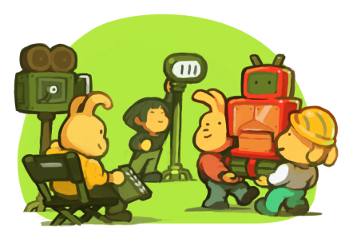Superpowers

v6.0 — Windows, MacOS, Linux
Gratuit. Financé par vos dons
Dernières news et événements à venir
| 18 Mars 2019 | Sortie de Superpowers v6.0 ! |
|---|---|
| 1er Février 2017 | Mise à jour RPG Battle System ! + Fermeture du Patreon |
| 30 Octobre 2016 | Sortie de Superpowers v4.0 ! |
| 30 Septembre 2016 | Superpowers v3.0 est là ! |
| 28 Août 2016 | Superpowers v2.0 est sorti :) |
| 28 Août 2016 | Nouveau billet Patreon : Superpowers v2 + asset pack 3D Warriors ! |
| 26 Juillet 2016 | Superpowers v1.1 : Quelques corrections de bugs |
| 26 Juillet 2016 | Superpowers v1.0 : La nouvelle version est enfin là ! |
| 24 Juin 2016 | Nouveau billet Patreon : Pack d'assets RPG Battle System et news de développement |
| 9 Avril 2016 | L'Hebdomadaire Superpowers #9 : Un marathon plutôt qu'un sprint |
| 17 Mars 2016 | L'Hebdomadaire Superpowers #8 : Nouvel asset pack ! Ninja Adventure partie 2 ! |
| 10 Mars 2016 | L'Hebdomadaire Superpowers #7 : Une très longue semaine |
| 27 Février 2016 | L'Hebdomadaire Superpowers #6 : Première étape Patreon |
| 21 Février 2016 | L'Hebdomadaire Superpowers #5 : La Ligue des Jeunes Super-héros |
| 11 Février 2016 | L'Hebdomadaire Superpowers #4 : Long terme |
| 4 Février 2016 | L'Hebdomadaire Superpowers #3 : Post-Global Game Jam |
| 28 Janvier 2016 | L'Hebdomadaire Superpowers #2 : Drag'n'drop dans les scènes |
| 21 Janvier 2016 | L'Hebdomadaire Superpowers #1 : Première édition |
| 14 Janvier 2016 | Nouvelle version : v0.19.0 — Une semaine d'Open Source. Et aussi : Superpowers LÖVE v0.1 — Première version ! |
| 8 Janvier 2016 | Nouvelle version : v0.18.1 — Correction d'un bug majeur. |
| 7 Janvier 2016 | La voici : v0.18.0 — La première version Open Source ! |
| 6 Janvier 2016 | Nous sommes sur Patreon ! Découvrez notre vidéo de présentation. |
Afficher toutes les news Inscrivez-vous à la newsletter pour les nouvelles importantes.



Découvrez Superpowers

L'interface de Superpowers est familière et facile à prendre en main.
Jouez à notre jeu démo Découverte de Superpowers.
Scriptez avec TypeScript

L'éditeur TypeScript est bourré de fonctionnalités utiles : coloration syntaxique,
auto-complétion, rapport d'erreurs instantanés, saut à la définition et plus.
Packs de ressources gratuites

Des centaines d'éléments sous licence Creative Commons Zero :
sprites, modèles 3D, effets sonores, polices et musique !
Publiez sur de nombreuses plateformes

Les jeux Superpowers peuvent être publiés sur PC, Mac, Linux, iOS et Android.
Et bien sûr, ils fonctionnent dans les navigateurs Web récents !
Démos et projets exemples

Nous avons compilé une librairie de jeux pour vous lancer.
Téléchargez plein de projets prêts à l'emploi sur GitHub.
Soutenez-nous sur Patreon

Nous travaillons avec amour sur Superpowers depuis fin 2014.
Soutenez notre travail en souscrivant sur Patreon. Merci ! :)